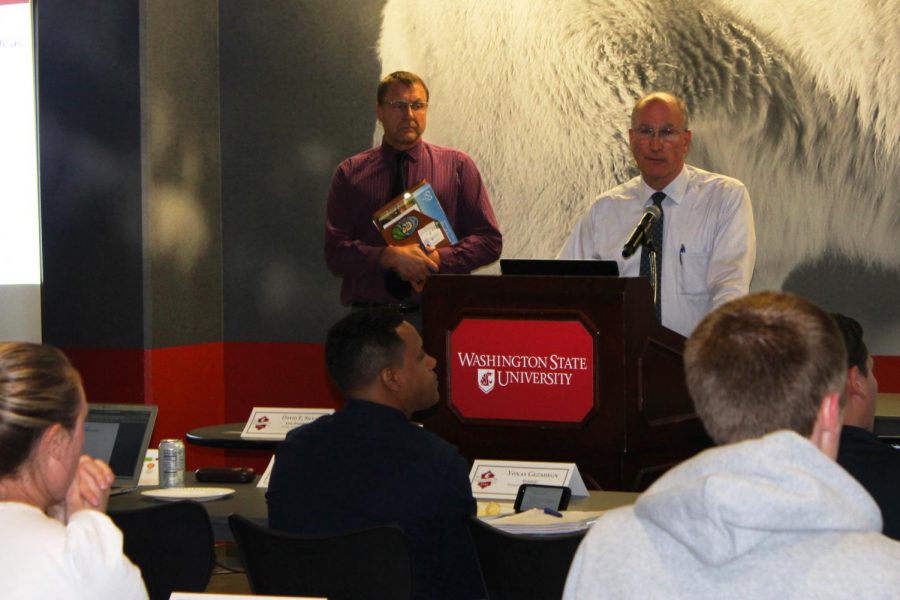Graduate students talk parking proposals
WSU Transportation Services director lays out project expenses
CHRISTIE HOIUM | THE DAILY EVERGREEN
John Shaheen, director of WSU Transportation Services, presents information from his department during the GPSA meeting Monday at the Butch’s Den.
September 10, 2018
At a GPSA meeting Monday night John Shaheen, director of WSU Transportation Services Services, spoke to the Senate on the strategic goals and decision-making process around transit and parking on the university campus.
“A common question we often get is, why do I have to pay for parking, why doesn’t the state pay for it?” Shaheen said. “The reason is because it’s state-budget mandated.”
With the overwhelming amount of students and WSU faculty bringing their cars to campus, creating parking space has been a main priority for the transportation office.
Shaheen said he thinks parking low impact developments may be the answer.
“Parking LIDs would be a great solution,” Shaheen said. “The cost for space for a parking LID is lower than parking garages and it would be easier to finance.”
Parking LIDs takes advantage of campus topography and uses existing streets for circulation, Shaheen said. Parking LIDs are also convent because they can be placed in the center of campus.
Transportation Services has already found seven potential sites, Shaheen said. The total project cost range would be anywhere between $4 million to $16 million, and cost per space would be between $17,200 and $20,800.
On the flip side, Transportation Services has also found five sites for parking garages in the middle of campus. The total project cost would be anywhere between $22 million to $41 million, and the cost per space would be $27,000 to $76,300.
“To build a parking garage in the middle of campus, it would cost the university $26 million for the total project and $52,000 per space,” Shaheen said. “There would be a bond payment for 25 years and the debt service would range anywhere between $2.2 million and $2.5 million. And to get to that point of revenue, there would be a 60 to 70 percent increase in all parking fees.”
To put it in perspective, Transportation Services, on a yearly basis, makes $5.1 million in revenue, Shaheen said. About 53 percent comes from parking permits, 26.21 percent comes from short-term parking, 10.69 percent from parking fines, 9.56 percent from special event parking and 0.6 percent comes from other revenues.
Transportation costs on a yearly basis $27,000 to $70,000 per garage space, $12,000 per paved space, $8,000 per gravel space, $110 per operating hour of transit, $150 per space for paved surface maintenance, $9 million for deferred parking surface maintenance and $2 million for deferred parking garage maintenance.
“These are just options, we haven’t settled on anything quite yet,” Shaheen said. “There are also other modes of transportation that can get people to campus.”
Pullman Transit reviews its routes every year, meaning they will create the quickest and most efficient ways to get people to and from campus.
The total student transit fee is only $68.74 per year, according to Shaheen. It will save a total of 2,500 to 3,000 parking spaces a year.








